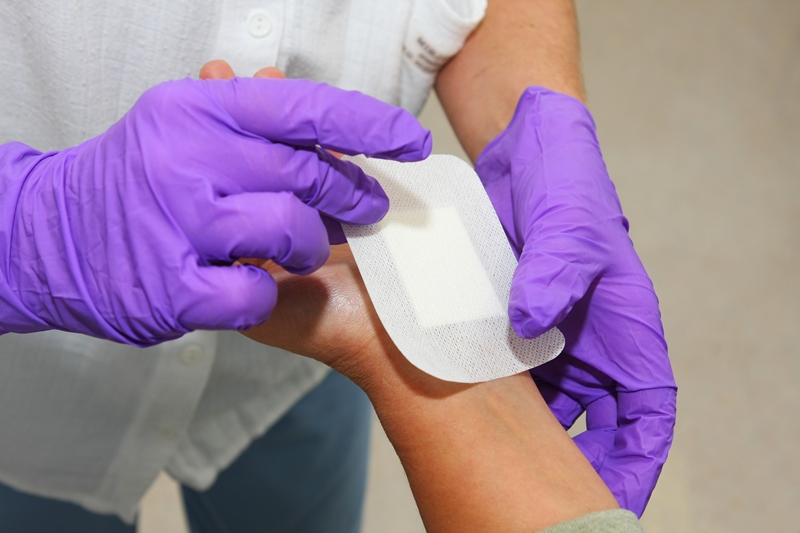There are two categories of wounds:
Acute wounds
They can be described as immediate wound; among which are especially burns, and post-operative wounds related to surgery. Or traumatic wounds secondary to an accident; which can look like cuts and lacerations but also bites/scratches, or can result from extreme weather conditions, as in the case of frostbite.
For these acute wounds, the physiological healing process takes between two and four weeks (read our article on “The principles of healing”).
Chronic wounds
These wounds are most often the result of an underlying disease or change in the patient’s general condition, which delay the healing process. They include leg ulcers, diabetic foot ulcers or even pressure ulcers. Their treatment requires local wound care, but also treatment of the underlying disease which may be venous or arterial insufficiency, diabetes, prolonged immobilisation associated with undernutrition and/or incontinence. These wounds take longer to heal (up to 210 days on average1) and are often recurring, which is why it is important to prevent relapse, especially in the case of venous leg ulcers. Age is also a risk factor for the appearance of wounds (due to the long progression of the underlying disease) and a less effective healing process (read our article on “Risk factors”).
Regardless of the level of damage to the various skin layers, each wound, acute or chronic, requires appropriate care and management. Indeed, the slightest break in the skin exposes the human body to bacterial contamination and therefore to a risk of infection.
How to manage a wound?
To help you manage your wound, follow this advice:
- First clean the wound with water, which should preferably be warm. Remove any foreign bodies at the surface or even in the wound (gravel, soil, pieces of glass, metal splinters etc.)
- If the tissue is particularly red around the edges of an acute wound, or there is a sensation of heat (sign of local inflammation) or it is yellow/green (sign of the presence of pus). Also, if the wound is weeping considerably, if the wound gives off an unpleasant smell, or if fever is also present, see a doctor immediately, as it is probably infected.
- You should see your doctor if you have a chronic wound of any type, which occurs or persists.
Read our article on “How to take care of your wound”.
DID YOU KNOW? / Under the skin, there is …
Each square centimetre of human skin contains 2.4 metres of blood vessels, mainly found in the dermis and the hypodermis. These layers are the deepest layers of the skin (read our article on “The Skin”).


